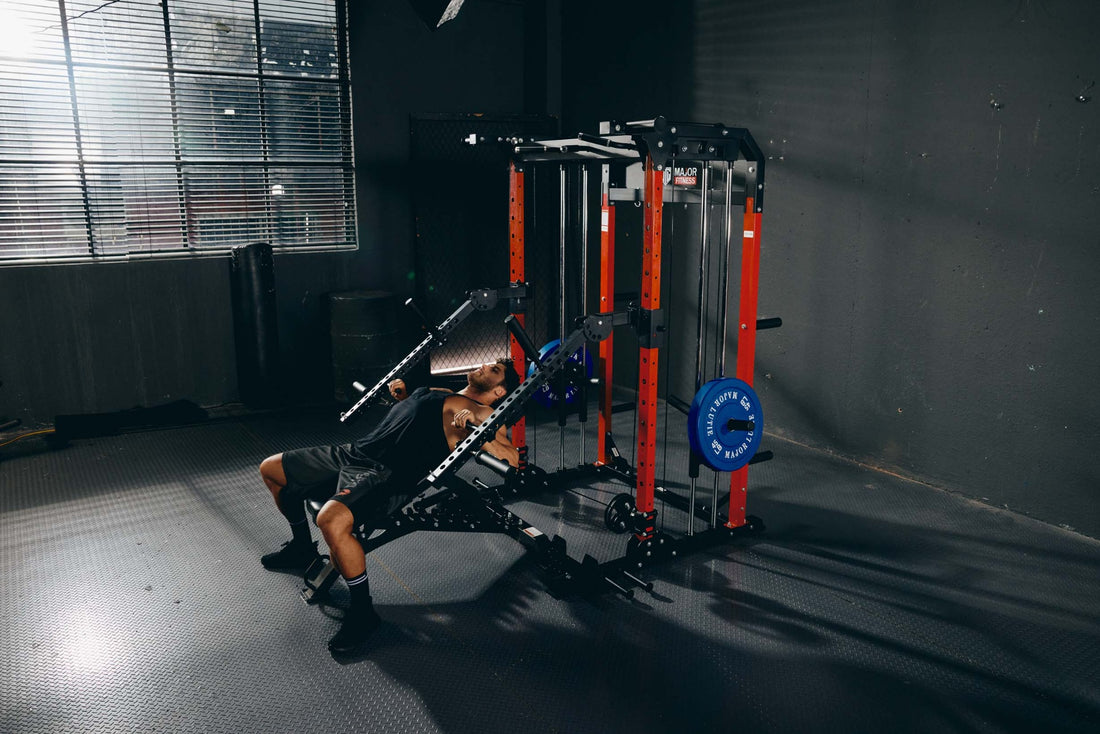
Are you looking to amp up your upper body strength and carve out well-defined triceps? If you haven’t already, it’s time to incorporate the close grip bench press into your gym regimen. But, what does close grip bench press work exactly, and why should you prioritize it over other exercises?
Let's dive in and explore every inch of this powerful exercise, from the primary muscles it targets to the long-term benefits you can expect. Whether you're a seasoned lifter or a fitness newbie, this guide aims to answer all your questions and help you perform the close grip bench press with confidence.
Targeted Muscles
The close grip bench press primarily targets the triceps brachii, making it an excellent exercise for those looking to build arm strength. However, the benefits extend beyond just the triceps. Here's a breakdown of the key muscles that the close grip bench press works:
- Triceps Brachii: As mentioned earlier, the triceps take the brunt of the load during this exercise. By keeping your hands closer together, you put more emphasis on the triceps compared to a traditional bench press.
- Pectoralis Major: Your chest muscles are still activated during the movement, albeit to a lesser extent than in a regular bench press.
- Anterior Deltoids: These shoulder muscles assist in the lifting motion, stabilizing the barbell, and ensuring smooth execution.
- Core Muscles: Maintaining a tight core is crucial for stability and preventing lower back injuries.
Benefits of the Close Grip Bench Press
The close grip bench press offers several unique advantages that make it a worthwhile addition to any workout routine:
- Enhanced Triceps Activation: This exercise places greater demand on the triceps, encouraging muscle growth and improved pushing power.
- Improved Lockout Strength: Focusing on the triceps can significantly improve your lockout strength during compound lifts like the traditional bench press and overhead press.
- Versatility: Whether you're a powerlifter, bodybuilder, or just someone looking to enhance upper body strength, this exercise fits seamlessly into various training modalities.
- Reduced Shoulder Strain: The narrower grip means less strain on the shoulder joints, lowering the risk of injury.
How to Perform the Close Grip Bench Press
Execution is everything when it comes to reaping the full benefits of the close grip bench press. Follow these steps to ensure proper form:
- Setup: Lie flat on a bench with your eyes directly underneath the bar. Plant your feet firmly on the ground and squeeze your shoulder blades together.
- Grip: Position your hands shoulder-width apart or slightly narrower, ensuring a firm grip on the barbell.
- Unrack the Bar: Lift the bar off the rack and position it directly above your chest, with your elbows locked.
- Lower the Bar: Gradually lower the bar towards your chest, ensuring your elbows are tucked close to your body to maximize triceps engagement.
- Press Up: Push the bar back up to the starting position, ensuring your elbows are fully extended. Repeat for the desired number of reps.

Common Mistakes to Avoid
Even a minor error in form can lead to suboptimal results or injury. Here are some common mistakes to watch out for:
- Too Wide a Grip: A wider grip minimizes triceps engagement, shifting the focus to the chest and shoulders.
- Flared Elbows: Keep your elbows close to your torso to maximize triceps activation and reduce shoulder strain.
- Arching the Back: Although a slight arch is natural, excessive arching can place unnecessary stress on the lower back.
- Rushed Reps: Controlled, slow movements ensure muscle engagement and reduce the risk of injury.
Advanced Variations
Once you’ve mastered the basic form, try these advanced variations to further challenge your muscles:
- Paused Close Grip Bench Press: Pause for a second at the bottom of the movement to eliminate momentum and increase muscle activation.
- Incline Close Grip Bench Press: Performing the exercise on an incline bench places more stress on the upper chest and anterior deltoids.
- Close Grip Bench Press with Chains: Adding chains increases resistance as you lift, improving lockout strength and overall stability.
- Single-Arm Close Grip Bench Press: Doing the exercise unilaterally can improve muscle imbalances and increase core stability.
Incorporating into Your Workout Routine
The close grip bench press can be incorporated into various training splits and routines. Here are some ideas:
- Push Day: Include it in your push day routine along with other chest and tricep exercises.
- Arm Day: Make it a staple on your arm day to really isolate and build the triceps.
- Compound Lift Superset: Pair it with a compound lift like the traditional bench press for a comprehensive upper body workout.
As you can see, the close grip bench press is more than just an arm exercise; it's a dynamic movement that offers significant upper body gains. If you’re serious about building muscle and strength, mastering this lift will undoubtedly pay dividends.
So, the next time you set foot in the gym, don't overlook the close grip bench press. Get ready to lift, squeeze, and grow stronger than ever! Happy lifting!





















